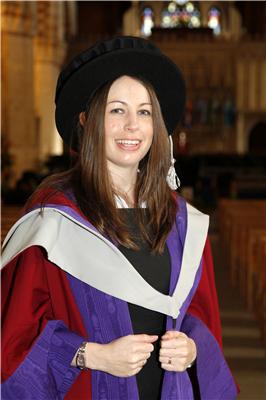Nov 26 2009
Research carried out at the University of Hertfordshire by a PhD student calls for the introduction of legislation related to non-exhaust emissions (from road surface wear, brakes or tyres), after sampling atmospheric particles within the Hatfield Tunnel.
 Samantha Lawrence
Samantha Lawrence
Dr Samantha Lawrence, aged 27 from Enfield, who was a PhD student under the supervision of Professor Ranjeet Sokhi (principle supervisor), Dr Hongjun Mao and Dr Ravindra Khaiwal at the University’s Centre of Atmospheric and Instrumentation Research (CAIR), received her PhD award last week at the University of Hertfordshire’s graduation ceremonies at St Alban's Cathedral for a thesis entitled: Tunnel Measurements and Source Apportionment Modelling to Quantify Atmospheric Particle Emissions from Non-Exhaust Sources.
The research was funded by NERC and Linde AG (formerly BOC Foundation).
Samantha has also received the Institution of Environmental Sciences 2008 John Rose Award, which helps exceptional research fulfil its potential by communicating it beyond the scientific community.
Dr Lawrence, who is currently working for Defra, installed a suite of particle samplers inside the Hatfield Tunnel. The data collected was analysed using receptor modelling techniques to identify and quantify non-exhaust emissions. Her research found that non-exhaust emissions accounted for over half of the PM10 (airborne particulate matter with an aerodynamic diameter of less than 10µm, linked to a number of health issues) sampled inside the tunnel.
The research measured 82 percent of the total PM10 mass in the tunnel and found that the following sources contribute to the total:
- Resuspension (27 percent)
- Diesel exhaust emissions (21 percent)
- Petrol exhaust emissions (12 percent)
- Brake wear emissions (11 percent)
- Road surface wear (11 percent)
- Unexplained (18 percent)
“This study provides a valuable insight into the major sources of atmospheric particles within urban areas,” said Dr Lawrence. “It noted that the majority of PM10 emissions within the tunnel originate from non-exhaust sources. Currently there are no regulations in place to control these emissions, due to the limited amount of information available regarding these sources. This study highlights the need for legislations to reduce these emissions.”